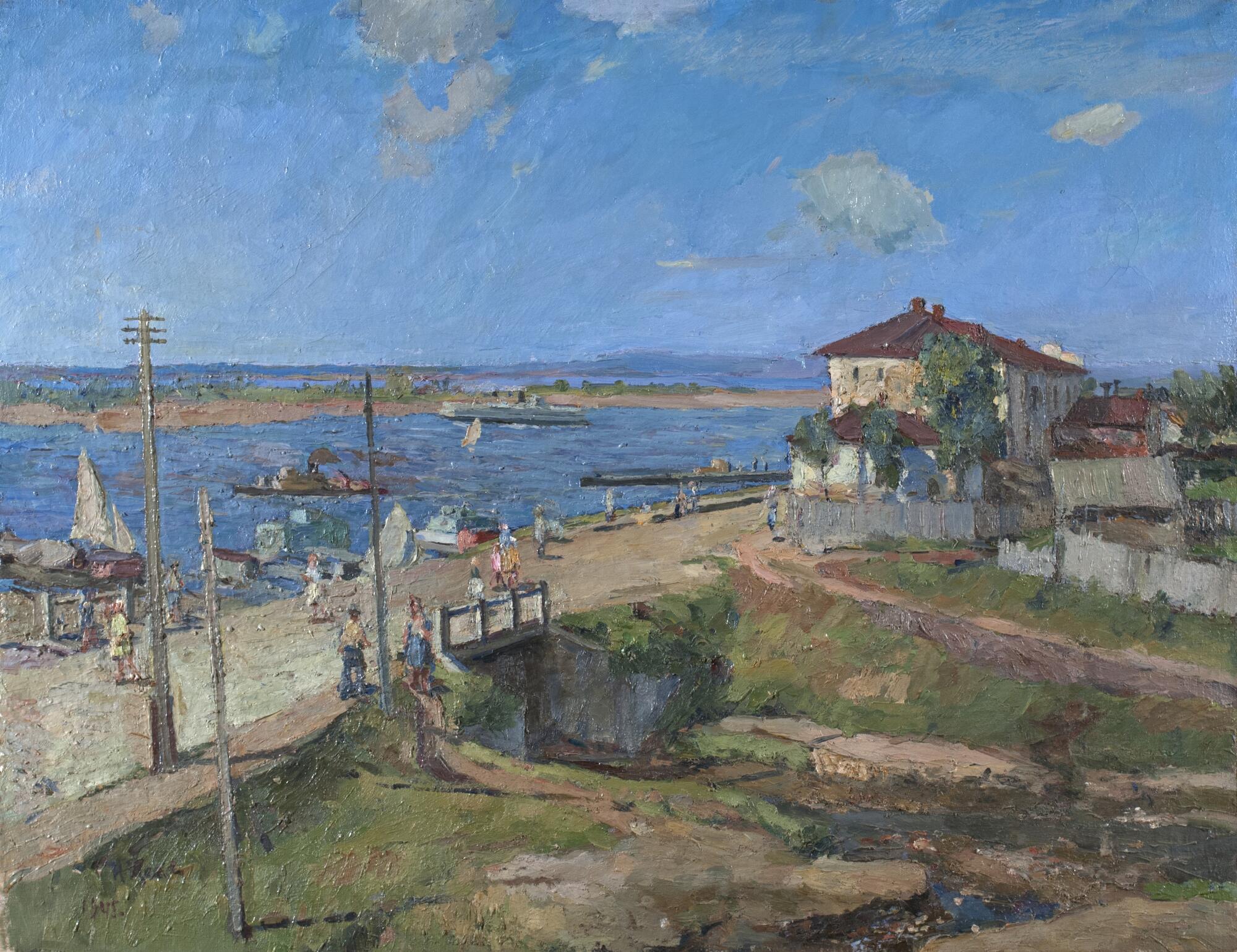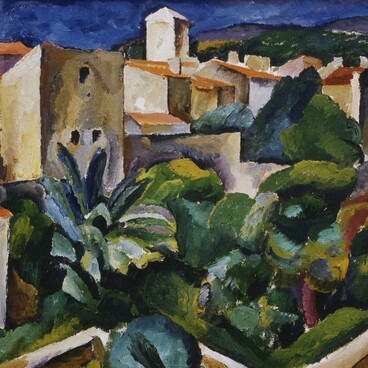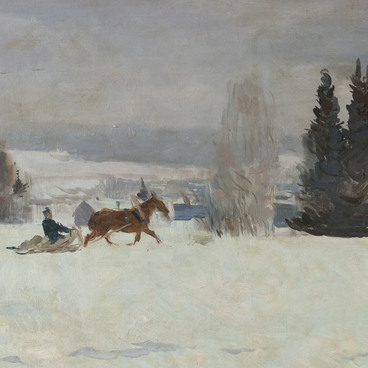The life of Ivan Scheglov was closely linked to Saratov, the city where he spent his youth and the years of his studies, and came of age creatively. For more than forty years, he taught at the Saratov Art School, and his former students always remember him with great love, gratitude, and respect. The strengths in the artist’s talent came out most clearly in his landscape works. In the post-war period, Scheglov took an interest in the problems involved in conveying space and the environment’s light and air. His most significant works from the forties are the urban landscapes Kazan Ascent, Mirniy Lane, and Day of Rest on the Volga.
The upbeat, optimistic mood of the first post-war summer is felt in the painting Kazan Ascent, done by the artist in 1945. The artist depicted the animated life of one of the oldest Streets in Saratov, Kazan Ascent. Since olden times, all the streets in a city that headed toward the riverbanks of the Volga, and sloped down to the river at a slight angle, were called ascents. Kazan Ascent, depicted by Scheglov, got its name from the Kazan Church located there that was built in the seventeenth century. Now only one small building is all that remains of the church, which existed up until the first quarter of the twentieth century. The ascent started from the Glebuchiy Ravine, part of which we see in the foreground of the painting. This ravine is still in the very center of the city. The picture shows a small river called the Taibalyk that flows along the bottom, overgrown with grass, and then, meandering, flows into the Volga River.
Telegraph poles, the small figures of people walking along the ascent, and the boats and sailboats moored to the shore create a typical image of Saratov in the forties. In Kazan Ascent, the artist juxtaposes what is close - the houses and trees - with the distant and endless - the river and the sky - and at the same time conceives the landscape space in the painting as a single totality of color. n an effort to give the color greater depth, and impart more subtlety to its transitional zones, the artist uses various methods to apply the paints, whose whimsical interaction forms an infinitely varied play of color relations, conveying the shape of objects, their positions in space, the properties of their surfaces, and their internal features.
The singularity of the artist’s gift for color lies in the fact that, even when working on a genuine landscape, he always kept the painting’s whole color arrangement in his imagination vividly. As a true landscape painter, for Scheglov one of the main elements of poetic feeling is space. The artist strives for an accurate and deeply truthful image of nature, for a combination of the picture’s overall, massive, spatial spread and its narrative and detail. The point of view, taken from slightly upward, allowed Scheglov to convey a panorama of the Volga Riverand that time-honored street in Saratov, Kazan Ascent.
The upbeat, optimistic mood of the first post-war summer is felt in the painting Kazan Ascent, done by the artist in 1945. The artist depicted the animated life of one of the oldest Streets in Saratov, Kazan Ascent. Since olden times, all the streets in a city that headed toward the riverbanks of the Volga, and sloped down to the river at a slight angle, were called ascents. Kazan Ascent, depicted by Scheglov, got its name from the Kazan Church located there that was built in the seventeenth century. Now only one small building is all that remains of the church, which existed up until the first quarter of the twentieth century. The ascent started from the Glebuchiy Ravine, part of which we see in the foreground of the painting. This ravine is still in the very center of the city. The picture shows a small river called the Taibalyk that flows along the bottom, overgrown with grass, and then, meandering, flows into the Volga River.
Telegraph poles, the small figures of people walking along the ascent, and the boats and sailboats moored to the shore create a typical image of Saratov in the forties. In Kazan Ascent, the artist juxtaposes what is close - the houses and trees - with the distant and endless - the river and the sky - and at the same time conceives the landscape space in the painting as a single totality of color. n an effort to give the color greater depth, and impart more subtlety to its transitional zones, the artist uses various methods to apply the paints, whose whimsical interaction forms an infinitely varied play of color relations, conveying the shape of objects, their positions in space, the properties of their surfaces, and their internal features.
The singularity of the artist’s gift for color lies in the fact that, even when working on a genuine landscape, he always kept the painting’s whole color arrangement in his imagination vividly. As a true landscape painter, for Scheglov one of the main elements of poetic feeling is space. The artist strives for an accurate and deeply truthful image of nature, for a combination of the picture’s overall, massive, spatial spread and its narrative and detail. The point of view, taken from slightly upward, allowed Scheglov to convey a panorama of the Volga Riverand that time-honored street in Saratov, Kazan Ascent.



